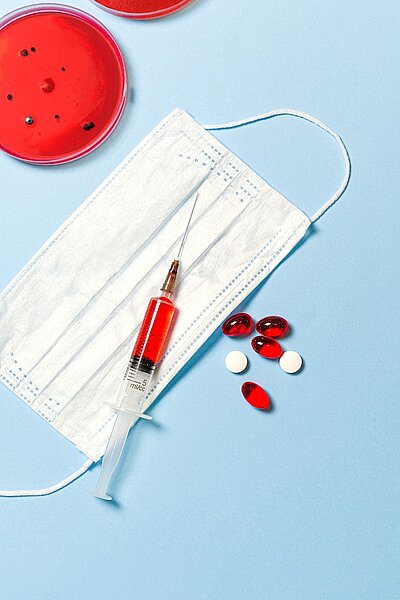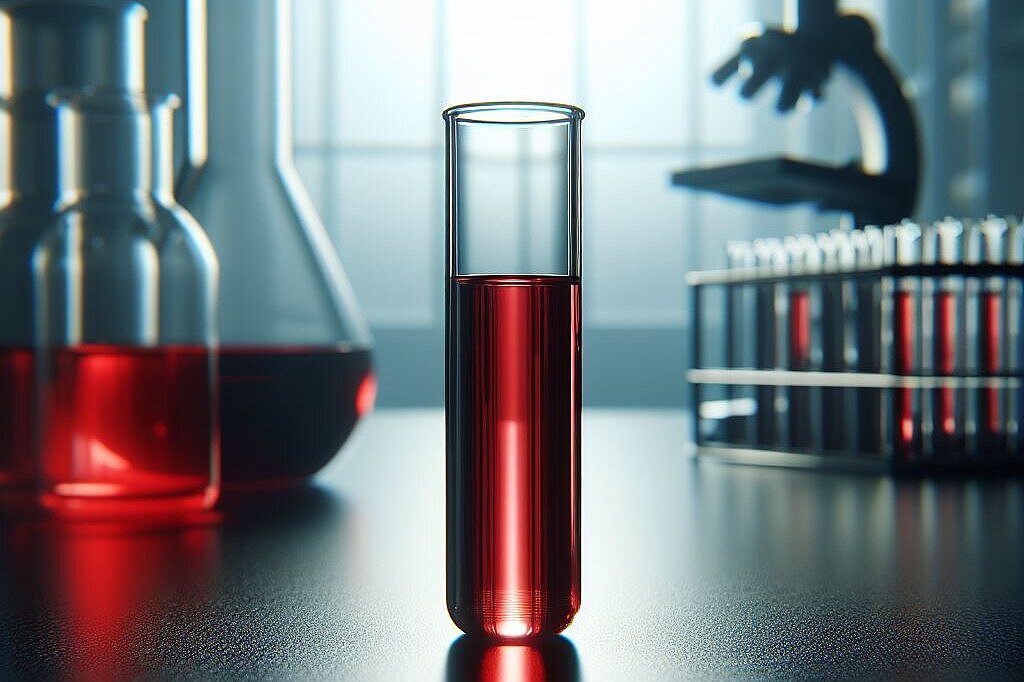Hemoglobin

Haemoglobin is an important component of the blood that is responsible for transporting oxygen around the body. But what exactly is haemoglobin and how does it work in dogs? In this article, you can find out more about the role of haemoglobin in your four-legged friend and what advantages and disadvantages it has.
What is hemoglobin?
Hemoglobin is a protein found in red blood cells. It consists of four subunits, each of which contains an iron atom. This iron atom can bind oxygen and release it again. This enables haemoglobin to transport oxygen from the lungs to the various organs and tissues and carbon dioxide back to the lungs.
Haemoglobin is therefore essential for respiration and the body's energy supply. Without haemoglobin, the blood could not transport oxygen and the cells would die.
How much hemoglobin do dogs have?
The hemoglobin content of the blood is measured in grams per liter (g/l). The normal value for dogs is between 120 and 180 g/l. This value can vary depending on the dog's age, breed, sex and state of health.
A hemoglobin level that is too low is called anemia. It can have various causes, e.g. blood loss, infections, parasite infestation or diseases of the bone marrow or spleen. Signs of anemia include paleness, weakness, shortness of breath, loss of appetite and weight loss.
An excessively high hemoglobin level is called polycythemia. It can be caused by an increased production of red blood cells in the bone marrow or by a reduced amount of fluid in the blood. Possible causes are a lack of fluid, heart or lung disease or tumors. Signs of polycythemia include redness, itching, headaches, dizziness and thrombosis.
How can the hemoglobin content in dogs be influenced?
The haemoglobin content in dogs depends on various factors, some of which can be influenced. These include
- Diet: A balanced diet with sufficient iron, vitamin B12 and folic acid is important for hemoglobin formation. Iron-rich foods include red meat, liver, egg yolk and green leafy vegetables. Vitamin B12 and folic acid are found in animal products such as meat, milk and eggs.
- Exercise: Regular exercise promotes blood circulation and oxygen supply to the body. This can have a positive effect on hemoglobin levels. However, you should not overdo it, as too much stress can also lead to increased production of red blood cells.
- Preventive health care: In order to avoid diseases that can affect the haemoglobin content or to detect them at an early stage, you should have your dog regularly examined by a vet. This also includes vaccinations, worming and parasite treatments.
Haemoglobin is a vital protein in the blood that is responsible for transporting oxygen. The normal value for dogs is between 120 and 180 g/l. A value that is too low or too high can indicate various diseases and should be treated by a vet. In order to keep the dog's haemoglobin content optimal, attention should be paid to a balanced diet, regular exercise and good health care.
Properties 3
Are you looking for other ingredients with a specific property?
Just click on them to find more.
If you notice any signs of hypersensitivity or poisoning in your dog, you should see your vet immediately. We are not a substitute for a vet, but we try to be as accurate as possible. Every dog reacts differently and we recommend you get a second opinion or consult your vet if in doubt.
Stay healthy and take good care of your four-legged friend!😊
Similar to Hemoglobin
Myoglobin is a protein found in the muscle cells of almost all vertebrates, including dogs. It has the important task of storing oxygen and delivering it to the muscle cells, especially during...
Ferritin is a protein found in the body of dogs (and humans) that serves as the main storage site for iron. It binds iron in a form that is safe and accessible to the body when it is needed. The...
Transferrin is a glycoprotein produced in the liver that plays a critical role in the transport of iron through the bloodstream to various cells and tissues of the body. Iron is an essential element...
A low albumin level in the blood of dogs, also known as hypoalbuminemia, can indicate various health problems affecting the liver, kidneys or intestines. Some possible causes of hypoalbuminemia...



